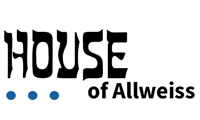Up until 1994 all of our board products were manufactured in the US. Our LSI chips were also manufactured in US foundries. The ATA product was very cost sensitive. We had looked at manufacturing in Taiwan in 1992. By then we had opened a sales office in Taiwan that handled all of Asia except Japan. Our Taiwan office was very interested in us beginning manufacture in their country. However the cost savings was not significant and manufacturing in Taiwan would create logistics problems. By 1994 we were under severe cost pressure on the ATA product. Also China had opened up and was very interested in doing business. Our contacts at NEC told us they had begun manufacturing some products in China, and could put us in touch with contract manufactures in Shenzhen, just over the border from Hong Kong. I sent our Taiwan manager over to China to check it out. We then sent prototypes IDE boards over to get quotes. The price quoted to manufacture the new IDE boards was significantly lower than quotes we had from US and Taiwanese assembly contractors. I then sent my Manufacturing Manager over with my Taiwan manager to visit the plant. He were happy with the facility and its management but suggested we retain a Hong Kong based OEM rep to monitor the Chinese. I agreed to this.
In late 1993 NEC gave us a contract for 20,000 ATA adapters a month for six months. They had qualified our software and hardware. Things went well for the first three months, but then we got a call from NEC complaining of quality problems. We sent an engineer immediately and began evaluating the problem. It turned out that the Chinese manufacturer had reduced the gold plating of the board connectors without notifying us. I flew to NEC headquarters in Atlanta and told them we would stand by the product; we would take back all the defective Adapters and replace them. I then flew to Hong Kong and had a meeting with our Chinese partners. I explained to them I had to stand by the product, which is the way business is done in the west. I expected them to do the same. They told me that yes, they wanted to learn how to do business with the west, they apologized and said they would fix the problem and invited our manufacturing people to audit what they were doing. Within three weeks the problem was solved and NEC was restocked with product that met the specification. After that incident we had no quality problems with our Chinese subcontractor. By the middle of 1995 all our low end host adapter board products were being manufactured in China, but our high end products continued to be made in the US. However the handwriting was on the wall. By 2000, almost all electronics manufacturing had moved from the US offshore.
Being customer driven is an important attribute for a company. Our customers were asking for an ATA product; however on the surface it did not seem to be nearly as profitable a business as SCSI. The key factor was we were able to gain margin by bundling added value software, originally developed for SCSI that we modified for ATA. Customer driven and margin driven are the two elements of this success story. By mid-1995 we had delivered over a million ATA adapters and software.
